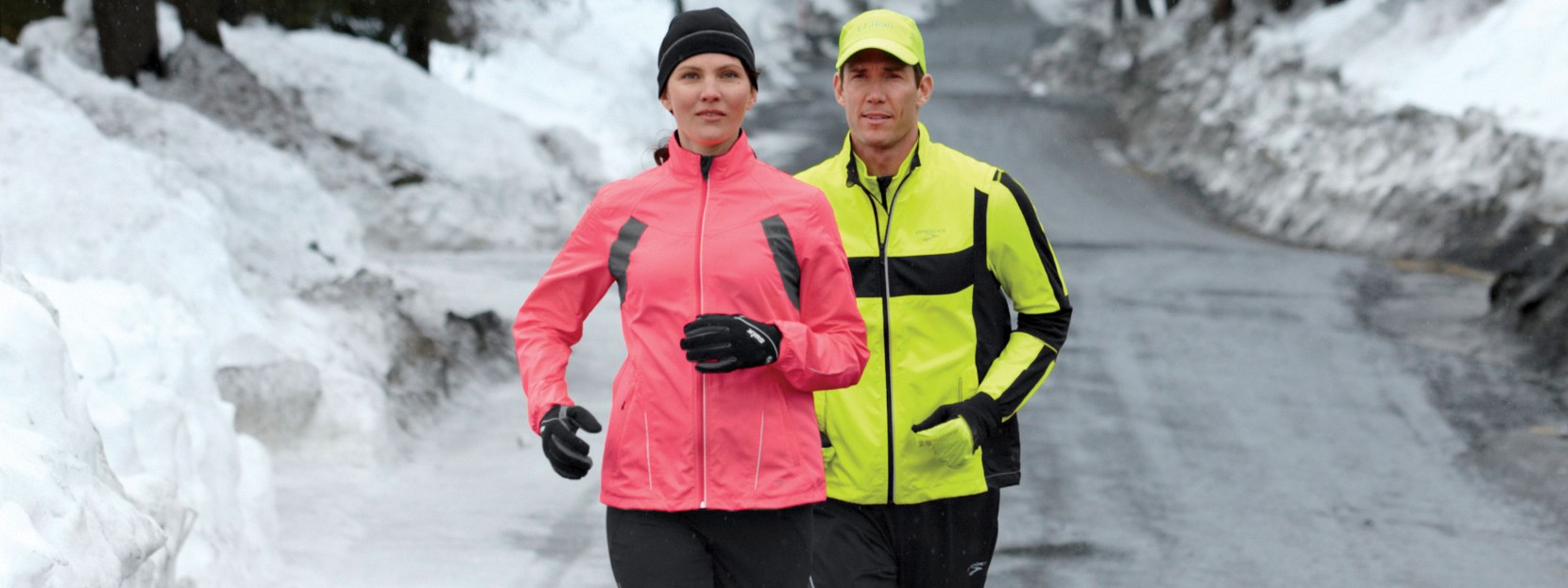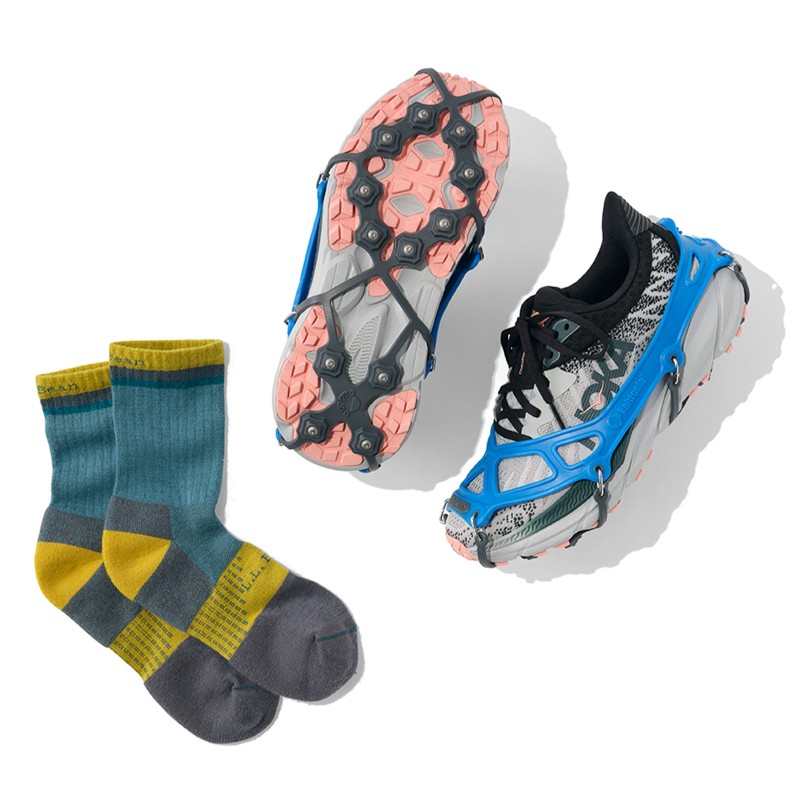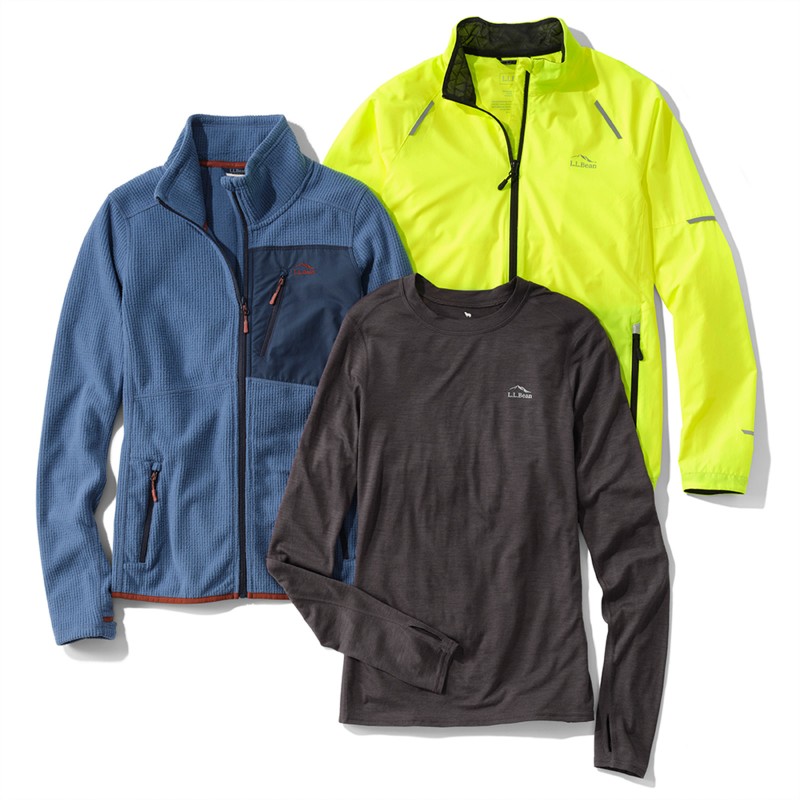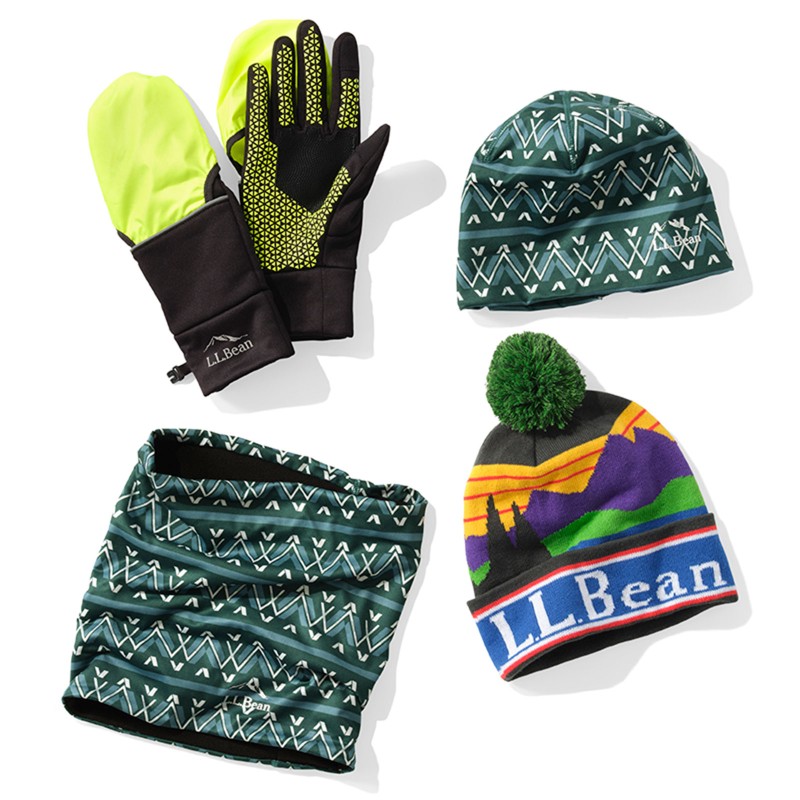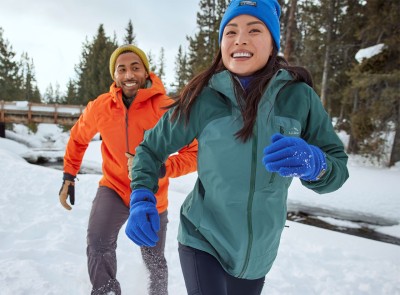What to Wear to Run in the Cold
Learn how to dress comfortably from head to toe for running when the frost bites and the wind stings.
4 Min. Read | Buying Guides
From wearing the right shoes and traction, to finding the right combination of layers and utilizing the proper accessories, we’ll show you how to stay cozy so you can get the most out of your winter miles.
1. Keep Your Feet Happy
When the temperatures drop and snow starts falling, what you wear on your feet could be the difference between a great run and a really bad one. As our founder once said, “If your feet are happy, you’re happy.
Socks
Though easy to overlook, your socks play an important role in protecting your feet from chilly conditions. Look for a merino wool blend, like our Athletic Crew Socks, to effectively wick away moisture and trap heat. Cotton socks hold moisture, like sweat or water, and take a long time to dry, so it can make you feel a lot cooler than the temperature outside – a recipe for cold toes.
Shoes
Rain, snow, slush, and ice are all possibilities when you’re running in the cold, and it’s important to have a shoe that can provide reliable traction through it all. When the roads and sidewalks get messy, consider investing in a road-to-trail shoe that has a little extra traction on the outsole. Some running shoes also come with a windproof and waterproof membrane, like GORE-TEX®, that will further protect feet from the cold.
Traction
Occasionally, even the extra rubber on your shoe's outsole isn’t quite enough to keep you upright on your run. In very icy conditions, or if you’re heading out on wintry trails, traction devices that have tungsten carbide spikes on the bottom that will provide a little more “bite” on slippery roads and trails.
2. Layer Up
Knowing how to layer properly is the key to staying comfortable when heading out in the cold. By using layers, you can easily adapt to a wide range of conditions and keep logging miles all season long.
Base Layers
Your base layer is the foundation of your cold weather running outfit. Like your socks, it’s important to look for a synthetic or merino wool blend. Because it sits next to your skin, it needs to both insulate and efficiently wick moisture away. For many runners, a base layer will provide just the right balance of breathability and warmth.
Check out our Guide to the Perfect Base Layers for a more in-depth look at the different warmth levels we offer.
Mid Layers
The mid layer is the most versatile of the layers, and it can be anything from a light, moisture-wicking t-shirt to a warm performance fleece depending on your needs for the day. If the conditions are right, such as a calm day with little wind and no rain or snow, you may only need to wear a base layer and mid layer to be comfortable.
Outerwear
With winter running, your outer layer’s primary job is to protect you from the wind chill and precipitation while your base and mid layers keep you cozy. If it’s cold enough, an insulated jacket could be a good choice, but often a light wind- and water-resistant jacket is all you need to keep the cold out and warmth in. It’s handy to have a good waterproof jacket for freezing rain, but they often don’t breathe well, leaving you a bit clammy underneath.
Check out our Outerwear Buying Guide for a more in-depth look at the different levels of outerwear we offer.
If it’s cold and windy, you might wear a Cresta Ultralight 150 Top as a base layer, Pathfinder Performance Fleece Jacket as a mid layer, and a Bean Bright Multisport Jacket as an outer layer to block the wind. However, if it’s not too windy and the temperature is a little warmer, you might be able to leave the multisport jacket behind. If it’s breezy but not too cold, you might just wear the base layer and multisport jacket without the fleece between them.
It may take a little trial and error to figure out what works best for you, but once you figure out your system, you’ll be able to confidently head out in any conditions.

Pro tip:
You don’t need to wear every layer on every run.
3. Accessorize
It’s often said that you lose most of your body heat through your head and neck area. While this may not necessarily be true, these areas are more sensitive to temperature changes and are usually more exposed to the weather. Finding the right coverage for your head and hands is an important part of staying comfortable in the cold.
Mittens
If you have the choice, opt for mittens over gloves to keep your hands warm. While slightly less functional than gloves for some activities, mittens are better for warmth. By keeping your fingers together, they’re able to share body heat more easily. They also have less surface area for that heat to escape. For versatility, look for a glove with a built-in wind-resistant overmitt, like our Bean Bright Stretch Glove with Overmitt.
Neckwear
One of the most versatile accessories is a fleece-lined neck gaiter. Wearing one around your neck prevents chilly winds from seeping in and helps trap body heat. You can also use it as a headband to keep your ears warm while still allowing some heat to escape from the top of your head, so you don’t overheat. It’s also a great option for headwear if you run with your hair in a ponytail.
Headwear
Your winter running hat should keep your head warm, but not so warm that it causes you to sweat a lot. Our L.L.Bean Performance Beanie packs just the right amount of warmth and moisture-wicking materials for high-output winter activities like running. For a warmer option on really cold days, check out the popular Katahdin Pom Hat. It’s made from a cozy polyester blend that transitions easily from active pursuits, like running, to more casual activities.
Now that you know what to wear, you can head outside with confidence and feel great out there – whether you’re running around the block or hitting the trails.
Shop Sneakers Shop Socks Shop Base Layers Shop Outerwear Shop Cold Weather Accessories
Related Stories

